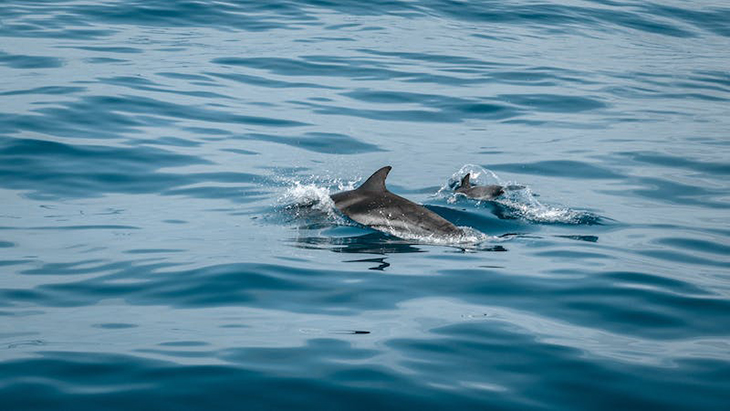
A new investigation that looked into dolphin communication has found a fascinating similarity between mother bottlenose dolphins and human mothers. Much like how human moms modify their vocal tone when speaking with their infants, mother bottlenose dolphins were observed whistling at a higher pitch when conversing with their own offspring.
Although challenging to prove definitely, several noteworthy findings from this study provide substantial support for this discovery. Notably, the dolphins exclusively employed this distinctive “baby talk” pitch when interacting with their calves, and only a non-stressful situation. Interestingly, this parallels the preference observed in human babies for baby talk over adult speech.
This groundbreaking study took place off the coast of Sarasota, Florida, where mother-calf pairs were carefully observed within a spacious, open-sea enclosure to ensure their well-being and comfort during the research.
The scientists at the Sarasota Dolphin Research Program utilized spectrograms to analyze the characteristics of each vocalization. Every dolphin possesses a unique whistle, and the spectrograms revealed that when communicating with their calves, the mothers produced whistles with lower frequencies and higher pitches, reminiscent of how humans tend to use cooing and melodious tones when interacting with their infants.
Laela Sayigh, a biologist at the Woods Hole Oceanographic Institution and the study’s lead author, told Science News. “It was very much like what human mothers do when they talk in a high-pitched voice to their infants. We have no idea of what they’re communicating, but likely, it’s, ‘I’m here. I’m here’.”
Dr. Sayigh suggests that the vastness of the ocean and the crowded nature of dolphin pods may make it challenging for the calf’s still-developing ears to distinguish individual whistles. Hence, using “baby talk” could make a mother’s whistle more discernable amidst the noise levels of the other dolphin vocalizations.
This study has been hailed as a milestone in this particular field, and may very well pave the way for future research to explore similar patterns of infant-directed speech in other animal species, like parrots or primates.
In the video below, you will hear one of the recordings of the dolphin whistles in a slowed down manner. It first shows the adult call without the calf, then the call with the calf, repeating this a second time for clarity.
What are your thoughts? Please comment below and share this news!
True Activist / Report a typo


